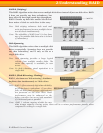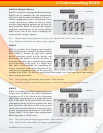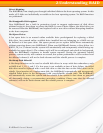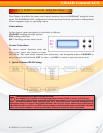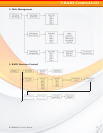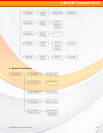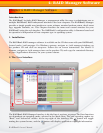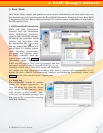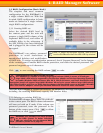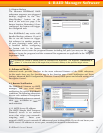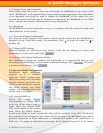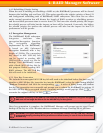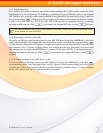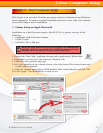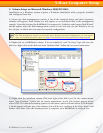
RAIDBank5 Owner’s Manual
23
3.3 RAID Configuration (Basic Mode)
The simplest and most common
configuration for the RAIDBank5 is
a single volume RAID set. With that
in mind, RAID configuration in basic
mode are limited to a single volume,
single RAID configurations.
3.3.1 Creating RAID set
Select the desired RAID level in
the context pane and the unit will
prepare a single RAID volume of the
requested RAID Level, and utilize all
available disks in the subsystem. If
the AES USB Key has been initialized
and is plugged in, the volume will be
encrypted.
The RAIDBank5 can enforce password
protection to avoid inadvertent or
unauthorized deletion and modification
of RAID sets. To assign an authorization password, check “Support Password” in the bottom
of the context pane to enable RAID volume protection, and enter the desired password. The
password supports up to 8 characters.
Click
to start creating the RAID volume to undo.
CONSIDERATIONS FOR RAID VOLUME CREATION
Your RAIDBank5 is capable of creating large logical volumes (LUNS) in excess of 2 Terabytes.
Large LUNS (>2TB) must be supported by the host bus adapter and the host Operating System to
be usable. Windows 2003 and newer, Mac OS X 10.4.8 and newer, and Linux distributions with
appropriate kernels all support large LUNS. Windows XP and prior cannot address large LUNS natively
over USB or FireWire, and must use eSATA host bus adapters that have RAID support to be usable. MicroNet
offers such host bus adapters- consult your MicroNet authorized reseller for more information.
!
Once the RAID volume is created successfully, an information message will appear
including the resulting RAID level, capacity and member disks.
3.3.2 Deleting an existing RAID Set
To delete RAID volumes, select “DELETE ALL RAID”
in the context pane. The RAID volume information
will turn red with an X mark. If the volume was
password protected, enter the password in the
bottom of the context pane. Click
to delete
the RAID set, or click to abort.
WARNING: This procedure will erase all data
on the RAID system! To delete individual
RAID sets selectively, see the Advanced RAID
procedure (section 4.2.2, page 27)
!
4- RAID Manager Software
Note: To create non-encrypted volumes, make sure to
boot the RAIDBank5 without the AES USB Key attached.



